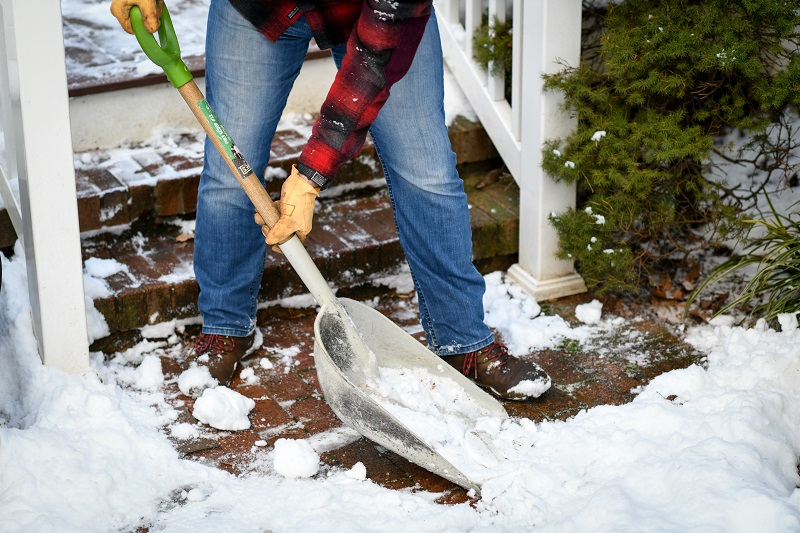Winter Safety Tips: Driving, Shoveling and Playing in Snow or Ice

January 25, 2023
Whether you like playing in the snow, or prefer to sit inside with hot cocoa, it’s important to modify certain activities when it’s snowy or icy.
Our expert, emergency medicine physician, Jared Ditkowsky, M.D., shares advice on how to stay safe in snow and ice.
How to Drive Safely in Snow or Ice
Driving in snowy, icy conditions is risky. Roads have less traction, which may cause skidding or accidents.
Stay home if going out isn’t essential. If your career allows for it, ask your boss if you can work from home.
If you need to venture out:
- Clear all snow and ice from your car, it’s the law in New Jersey. Be sure to get everything off, not just the windows. Snow left on the roof can slide onto your windshield, or onto another vehicle behind you
- Put your headlights on, for better visibility
- Drive slower than usual – at or below the posted speed limit
- Leave twice as much room as usual between you and the next car
- Slow down before driving on exit ramps or other curvy roadways
- Don’t brake or accelerate if you skid; steer toward the skid, then straighten out
- Keep your distance from snowplows; drivers may not see you
- Travel with a shovel, ice scraper, flashlight, charged cell phone and blankets
How to Walk Safely in Snow or Ice
On wintry days, you may not be able to avoid snowy or ice-covered sidewalks. Stepping carefully may help you avoid injury.
If you need to walk through snow or ice:
- Wear rubber-soled boots or shoes
- Take small, slow, shuffling steps, bending your knees for extra stability
- Keep your arms out for balance, not in your pockets for warmth; wear gloves instead
- Keep in mind that icy surfaces may be hidden by snow
- Pay full attention to where you’re stepping, instead of multitasking
- Avoid carrying heavy or bulky items that change your center of gravity
- Hold onto your car or another stable item for balance, when possible
- Use handrails if you need to use stairs, and walk sideways for greater stability
If you slip and are going to fall:
- Relax your body, instead of tensing up
- Tuck your chin into your chest, so you’re less likely to hit your head
- Roll into the fall, if possible, so that your body gradually touches the ground\
- Try to land on your buttocks, side or shoulder, not your hands or head
- Round your body, to avoid injury to bones
- Avoid the “FOOSH”! Falling-on-outstretched-hands: this can put you at high risk for wrist injury
How to Shovel Snow Safely
Shoveling snow may increase your risk of heart attack. If you have a heart condition, you shouldn’t shovel snow without checking with your doctor. If while shoveling snow you experience chest pain or difficulty breathing, stop this activity and seek medical care immediately.
Shoveling snow may also be too intense for people who are not used to a high level of exercise. Think about hiring local teenagers to clear your driveway if you’re at risk for heart attack.
If using a snow blower, remember to never dislodge ice or debris that may be caught by reaching into the mechanism. Hand and finger injuries as a result are extremely common.
Heading out to shovel? Skip these activities beforehand:
- Don’t eat a big meal, which may make you tired
- Don’t drink caffeine, which may stress your heart
- Don’t smoke, which raises blood-pressure levels
Do consider following these safe shoveling tips:
- Shovel with someone else, if possible, to reduce the workload
- Warm up first, so you’re ready to move and lift
- Dress in warm layers; remove a layer if you get too hot
- Bend at the knees, rather than curving your back
- Take small shovelfuls, to avoid straining yourself
- Don’t twist your back while emptying your shovel; you may injure yourself
- Push snow out of the way with a shovel, rather than lifting it
- Work slowly, taking breaks as needed
- Avoid sweating, which can cool off your body in extreme temperatures and lead to hypothermia
How Kids Can Play Safely in the Snow
Kids love sledding, building snowmen and playing in the snow. But too-cold conditions may lead to frostbite or hypothermia.
Let your kids have fun while you focus on safety. To ensure safe winter play:
- Dress children in warm layers, including a waterproof outer layer to keep them dry
- Don’t forget hats, mittens/gloves, scarves and boots
- Apply sunscreen on their faces, because ultraviolet light reflects off bright snow
- Send your child inside to change if their clothing gets wet
- Offer periodic indoor breaks with warm beverages, so kids don’t get chilled
- End playtime if your kids are shivering or seem cold
- Keep kids indoors if the wind chill is below -15 degrees
Next Steps & Resources:
- Meet our source: Jared Ditkowsky, M.D.
- To make an appointment with a doctor near you, call 800-822-8905 or visit our website.
- Winter Safety for Older Adults - HealthinAging.org
- Winter Weather - Occupational Safety and Health Administration
The material provided through HealthU is intended to be used as general information only and should not replace the advice of your physician. Always consult your physician for individual care.






